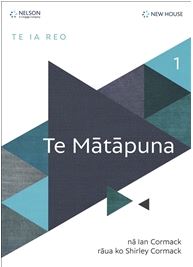Tomorrow’s Schools and Kōhanga Reo
In 1990, the New Zealand school system was reformed in a programme called Tomorrow’s Schools. It meant a change from central control to a parental elected Board of Trustees, and the Department of Education became the Ministry of Education. Ian was working for the Ministry of Education and his job was to prepare schools for the new system and to have their charters approved. He did this for all Māori schools in the Whanganui/Taranaki region within three months.
He then joined the Education Review Office where he worked as review officer for the same region.
In 1991, he started auditing the Kōhanga Reo schools in the area. For his “protection”, a couple of Māori women went with him. He started to write his reports in Māori. As other areas started to have their own Māori reviewers and also wrote their reports in Māori, he started to edit those reports.
He was seconded to the head office in Wellington to run Māori education projects and in 1995, he became National Manager for Māori Education for the Education Review Office (ERO) and had his own staff. Some of those were fluent speakers and worked as reviewers; other Māori staff in the offices had the opportunity to work with him. Ian was responsible for auditing all immersion education, which means all Kaupapa Māori and all Kōhanga Reo schools. He produced the reports in Māori. Sometimes, the media wanted a copy of the report, but they couldn’t read Māori. So the reports were translated into English in about 10 days by which the interest had often died out. It also gave the institutions time to get on their feet before there was too much interest from the media.
He started to review the language in the reports and created new words and compiled glossaries by going through the reports.
In 1999, Ian left his job at ERO, started to write courses for the correspondence school, and did some other work involving Māori, but was not a qualified translator yet.
Writing books for secondary schools
In the 1990s, Ian and Shirley wrote three books in a series: Te Mātāpuna (the s ource), Te Pūkaki (the stream), and Te Awa Rere (the flowing river). These books were used in secondary schools for teaching and learning Māori.
ource), Te Pūkaki (the stream), and Te Awa Rere (the flowing river). These books were used in secondary schools for teaching and learning Māori.
The books had the following approach: They each contained a minimum of words, and the grammar was explained in pictures and diagrams. This was because grammatical terms that are used in European languages don’t necessarily cross over to Māori very comfortably.
One example of these differences: The passive voice is avoided in English where possible, because it sounds very formal and can be used to distance the speaker/writer from the audience. In Māori, the passive mode is added to word endings. This makes words more active than the active voice. “You are seen by me” in Māori is more active than “I see you”. Because of the influence of English, learners of Māori now tend to avoid the passive in Māori. Fluent speakers of Māori, however, are still using the passive form to emphasise an action.
Ian also wrote three teacher’s manuals. In these, learning is less done in the traditionally visual way, but involves other senses like touch. For example, sentences written on paper are cut out and need then to be re-arranged by the students. Back then, this was not commonly done in classrooms.
Books for adult learners
Ian wrote three books for adults who want to learn Te Reo Māori: Te Hikuwai (the source of the stream), Te Wahapū (the river mouth) and Te Moana Waiwai (The Wide Open Sea), which is still sitting on his computer.
Te Hikuwai and Te Wahapū are based on conversational Māori, which means they use highly idiomatic Māori, and are intended for self-study. It is difficult to publish books for Māori learners outside of the school context because of the limited commercial opportunities.
His books are available to purchase at select bookstores, e.g. at Unity Books Wellington or McLeods in Rotorua (where I saw them recently). Both bookstores have online shops.

.png)